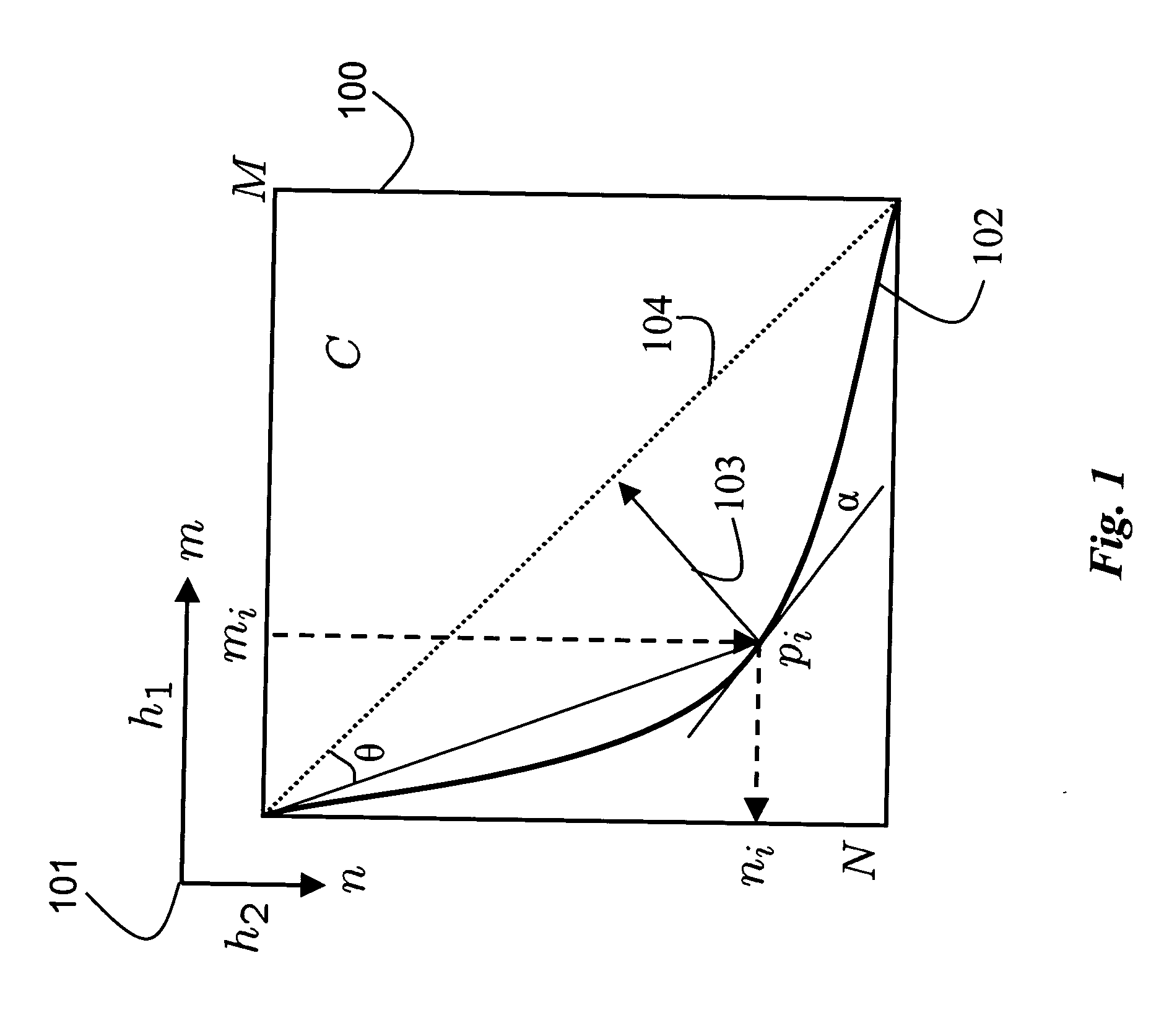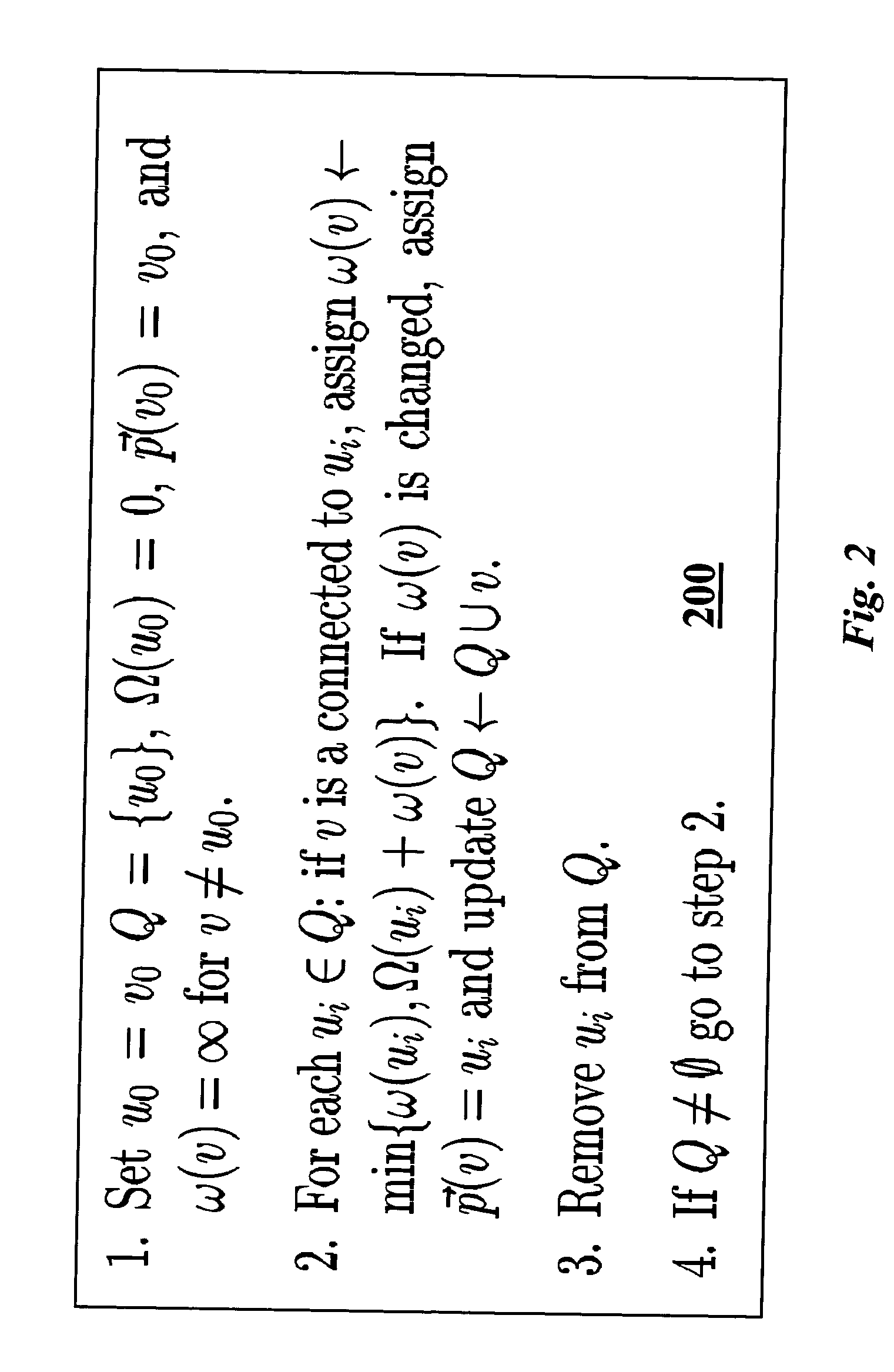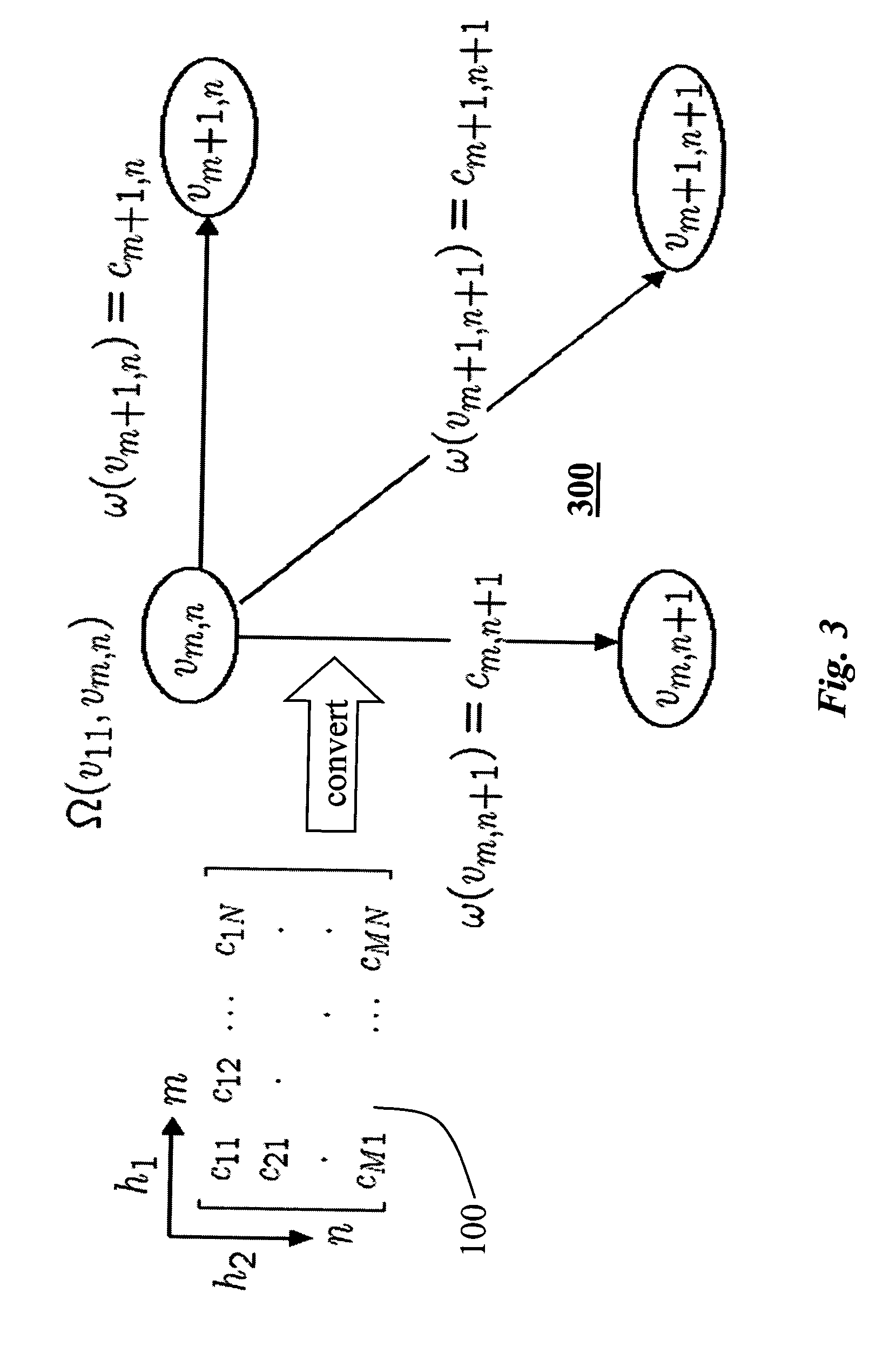Method for determining similarities between data sequences using cross-correlation matrices and deformation functions
a technology of cross-correlation matrix and deformation function, applied in the field of comparing finite data sequences, can solve the problems of large distances, failure of conventional distance metrics, and inability to determine a distance metric between sequences
- Summary
- Abstract
- Description
- Claims
- Application Information
AI Technical Summary
Benefits of technology
Problems solved by technology
Method used
Image
Examples
Embodiment Construction
[0026] Data Sequences
[0027] A finite-length data sequence, h, is a vector [h[0], . . . , h[M]] of data values. Each ‘bin’ h[m] has the value of the vector at an index number m. The data sequence can represent various types of physical phenomena. In the case where the sequence h represents a color histogram of an image, the bin h[m] contains the number of pixels corresponding to a color range of m in the image, where M is the total number of the bins.
[0028] In this example, the sequence represents the pixel colors as a set of positive real numbers +. The widths of the bins can be made the same when the sampling frequency along the indexing axis is constant mi−mi−1=mj−mj−1 for every i and j. The sequence is normalized such that Σm=0mh[m]=1.
[0029] Although a color image is used as an example data sequence for the purpose of this description, the invention can be worked with other finite length data sequences that conform to the above definition, for example audio signals, radio sign...
PUM
| Property | Measurement | Unit |
|---|---|---|
| distances | aaaaa | aaaaa |
| color histogram | aaaaa | aaaaa |
| lengths | aaaaa | aaaaa |
Abstract
Description
Claims
Application Information
 Login to View More
Login to View More - R&D
- Intellectual Property
- Life Sciences
- Materials
- Tech Scout
- Unparalleled Data Quality
- Higher Quality Content
- 60% Fewer Hallucinations
Browse by: Latest US Patents, China's latest patents, Technical Efficacy Thesaurus, Application Domain, Technology Topic, Popular Technical Reports.
© 2025 PatSnap. All rights reserved.Legal|Privacy policy|Modern Slavery Act Transparency Statement|Sitemap|About US| Contact US: help@patsnap.com



